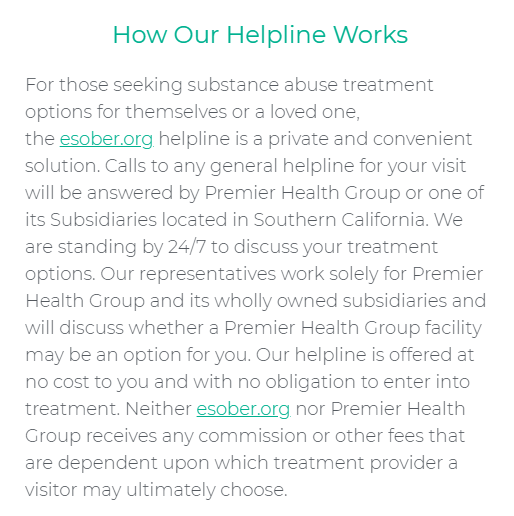Many people who have not heard of fentanyl may have heard of its prescription forms, such as Actiq® and Duragesic®. This drug is a powerful synthetic opioid that works much like morphine if morphine was a hundred times more potent. In a medical setting, fentanyl is used to help treat patients with severe pain, such as after surgery. Unfortunately, this potent drug, although a prescription drug, has been subject to illegal use. This has led to more fentanyl addictions and, subsequently, overdoses. Regardless, fentanyl, along with other synthetic opioids, are some of the most common drugs to be involved in overdose cases. In fact, it is one of the leading causes of drug overdose death in the US alone.
That said, in this article, we’ll delve deeper into fentanyl, talking about how long it will stay in your systems, abuse signs and systems that stem from it, and more.
How Long Does Fentanyl Stay In the System?
When taking fentanyl, it is vital to know how long it stays in the system so that you don’t accidentally overdose yourself if you need to take them for medicinal purposes.
With that in mind, the half-life of fentanyl is around two to four hours. In other words, it takes about two to four hours for half the drug to leave the body if taken through intravenous means. This means that, in total, it may take anywhere from just over ten hours to over twenty hours for fentanyl to leave the system. If fentanyl is taken as a tablet instead, the half-life is around double to triple the time, taking up to or over 36 hours to leave the system.
Remember that even when fentanyl breaks down and leaves your system, it leaves something known as metabolites. These can stay in your body for several days, meaning that if you were to take a fentanyl test, you might be found positive for it.
What Are the Signs of Addiction?
As fentanyl is used more often, the individual using it will grow more tolerant of the drug. This forces them to take more of the drug to feel its pain-relieving benefits, leading to abuse, addiction, and, ultimately, overdose.
Now, as fentanyl usage increases, so will the signs start to show. The first, and more obvious sign, is that more of the drug has to be taken to feel the same level of pleasure. Also, the individual will struggle to find any pleasure from anything else other than the drug itself. This leads to overwhelming cravings for the drug, increasing the frequency at which the drug is being used.
The second sign, and a sign that usually follows the first sign, is that the individual finds it hard to control their drug use. This is the start of addiction, and from here, it is near impossible for them to cut back on the drug all by themselves. Unfortunately, this cycle is a relentless one. When the addiction gets worse, the chances of breaking out of it become all the more challenging.
The third sign that fentanyl abuse is now apparent is that drug use affects the individual’s life. From their loved ones to their job, the drug will interfere with them all. This causes the individual to care for nothing more than using the drug, ignoring all the other aspects of life and causing everything to spiral out of control.
What Are the Short-Term Effects?
When using such a potent drug, there will be effects that follow it immediately. These are known as short-term effects, and these effects tend to show up when people inject fentanyl straight into their veins.
Regardless, no matter how fentanyl is taken, short-term effects include constipation, dizziness, drowsiness, sedation, and confusion. Also, a deep sense of euphoria and relaxation can be felt by the user. Unfortunately, even short-term use of fentanyl can be highly dangerous. For instance, the opioid is known to cause a person to go unconscious and run into breathing issues, both of which can be life-threatening.
What Are the Long-Term Effects?
Apart from short-term effects, long-term effects also exist for fentanyl. These will happen after abuse of fentanyl has dragged on for a long time.
Long-term effects can include heart and respiratory problems, both of which can be life-threatening. Also, those who typically inject fentanyl straight into their system will be at much higher risk of contracting HIV or AIDs and other diseases if the needle is shared between multiple people. Finally, long-term use of fentanyl increases the likelihood of overdose, which can easily lead to death. For pregnant women, fentanyl can cause a low birth weight, neonatal abstinence syndrome, and even a miscarriage.

What Are the Overdose Signs?
Knowing that the majority of all opioid-related deaths were caused by fentanyl, knowing the signs of a fentanyl overdose is vital to catch the problem quickly before it is too late. Such signs even apply to drugs that weren’t originally supposed to contain fentanyl, such as illegally-made prescription pills and even fake cocaine.
One of the most apparent signs of a fentanyl overdose is that the person starts to feel incredibly sleepy. Such sleepiness can get intense, even leading to coma or stupor. Once they are unconscious, it will be incredibly challenging to wake them up.
Apart from extreme drowsiness, other signs of a fentanyl overdose include the lips and fingernails going blue or purple, the body going limp, inability to speak, pale skin, slowed heartbeat, and vomiting. The most dangerous symptom of an overdose is the inability to breathe properly, where the breathing slows down or even stops. This is referred to as respiratory depression, and when this happens, it can lead to hypoxia. Hypoxia occurs when the brain cannot get enough oxygen, leading to coma and even death.
What are the withdrawal symptoms?
Withdrawing from fentanyl is a challenge, primarily because of the dependence level that results from addiction. The user wants to feel good again, and without that feeling, they feel empty. Unfortunately, the ordeal becomes even worse because of the uncomfortable and even painful symptoms that follow withdrawal.
Fentanyl withdrawal can include any of the following symptoms: anxiety, muscle tremors, muscle pain, runny nose, restlessness, diarrhea, cold flashes, teary eyes, and more. Keep in mind these symptoms, although painful and uncomfortable, are not life-threatening by themselves. However, complications that may follow can be dangerous. For example, if someone vomits but accidentally breathes the vomit in, they might choke. Such an issue can also lead to pneumonia that can lead to coma and death.
Conclusion
As you can see, fentanyl is a highly addictive drug that can be incredibly dangerous if misused. Even during the withdrawal, the dangers that fentanyl has left behind can still be threatening due to the complications that may have spawned from the symptoms. These dangers can happen when an individual attempts to detoxify themselves from the drug without any outside help. As such, an excellent way to stay safe during the withdrawal phase and even increase the likelihood of success is to reach out to a professional. They can offer a medical detox program that’s safe for use and place the individual in a monitored environment. Their assistance will prove incredibly beneficial in the success of being free from the grips of fentanyl, ensuring that one’s life can begin anew, making new and the right steps forward.
Source:




